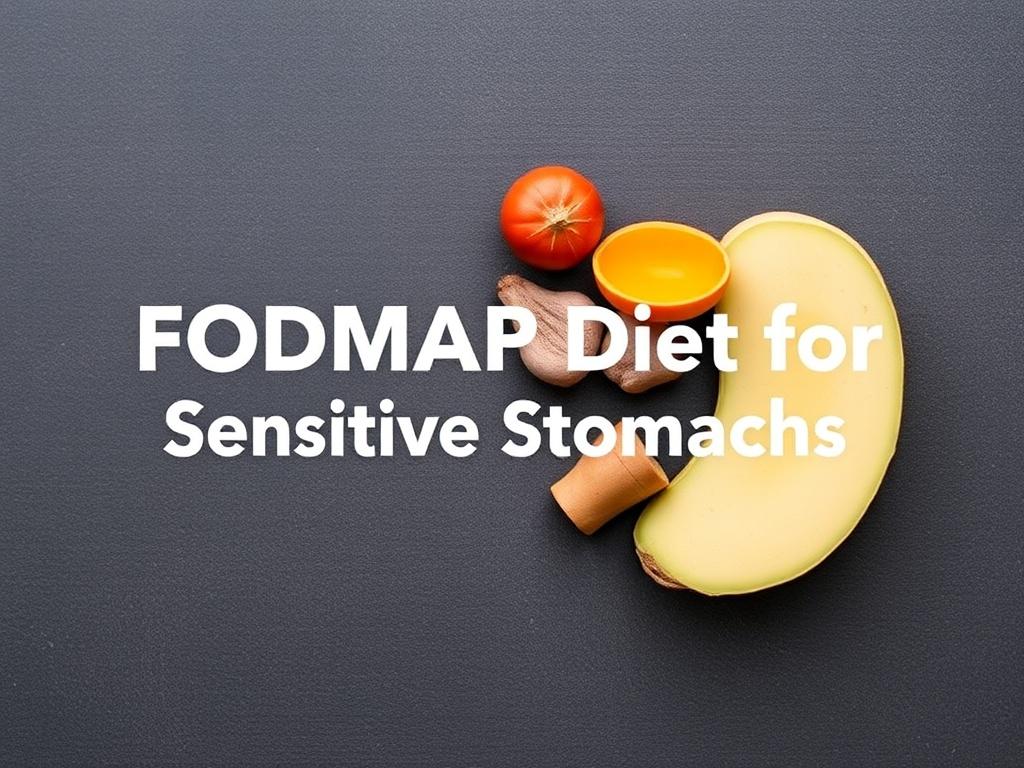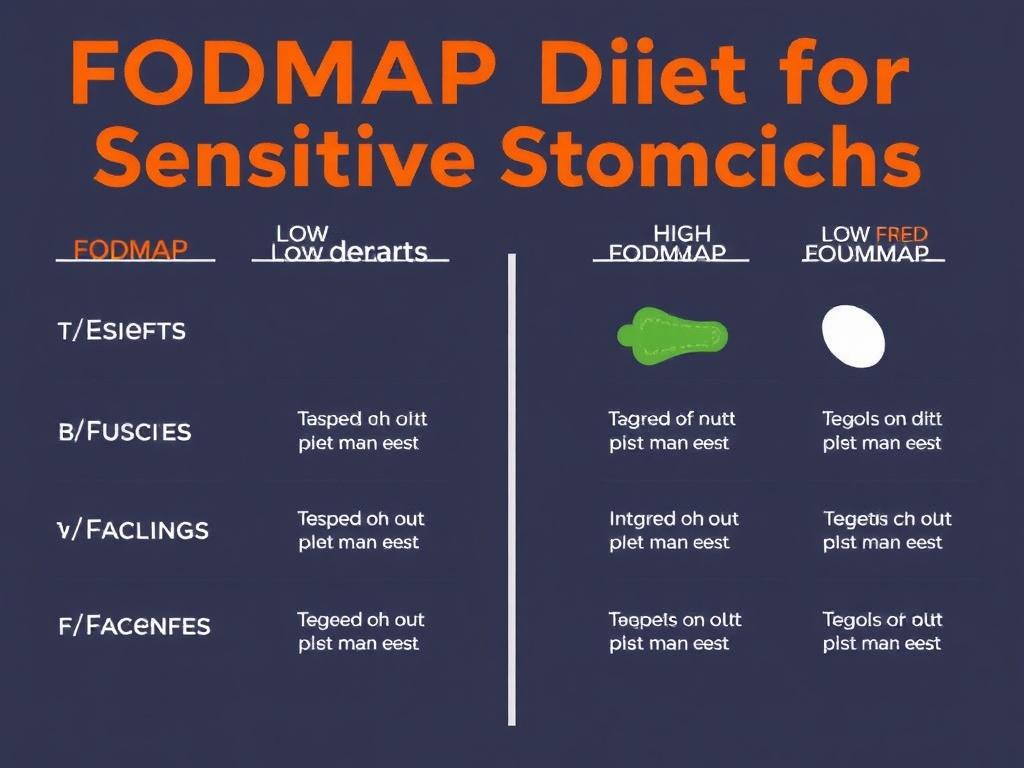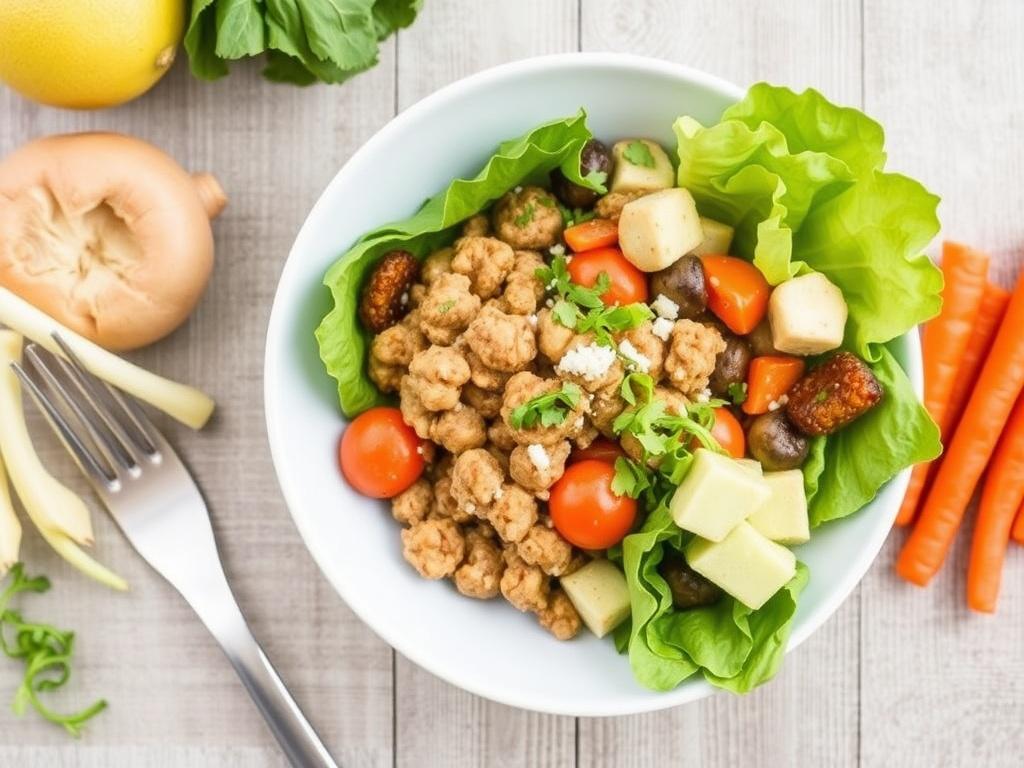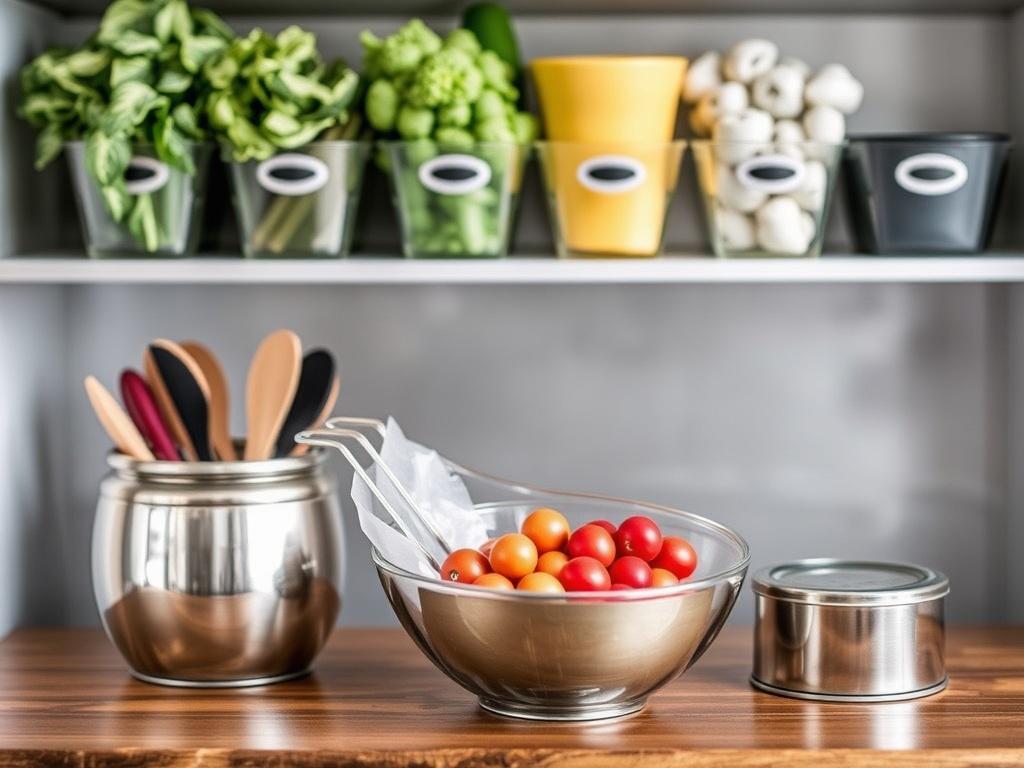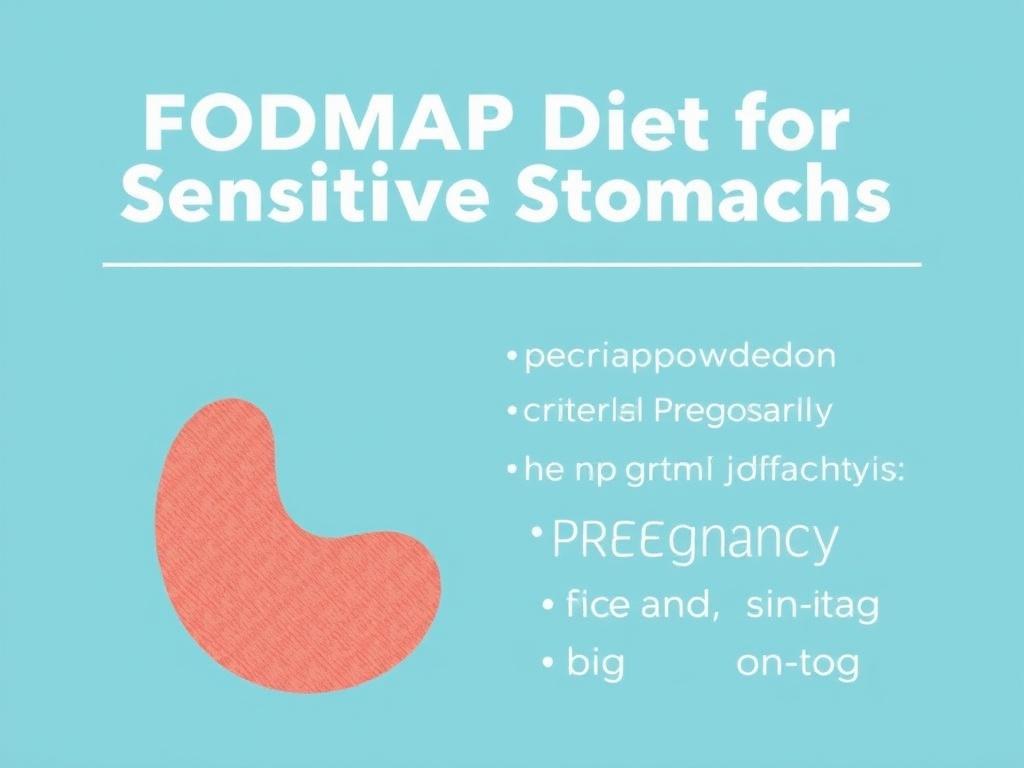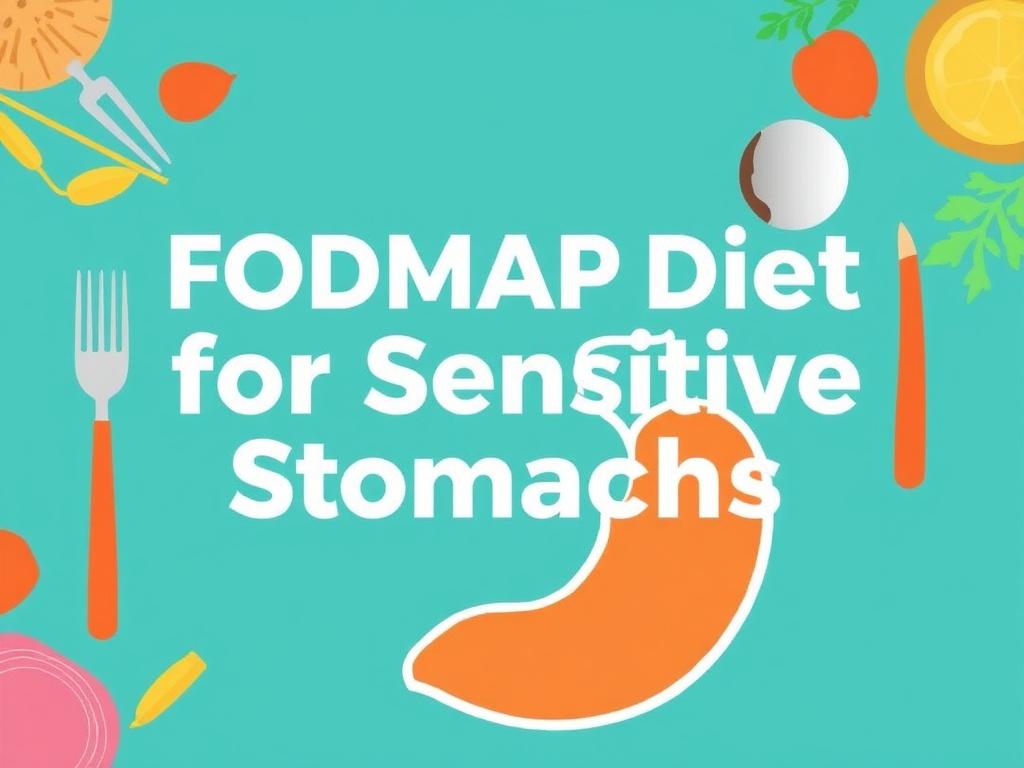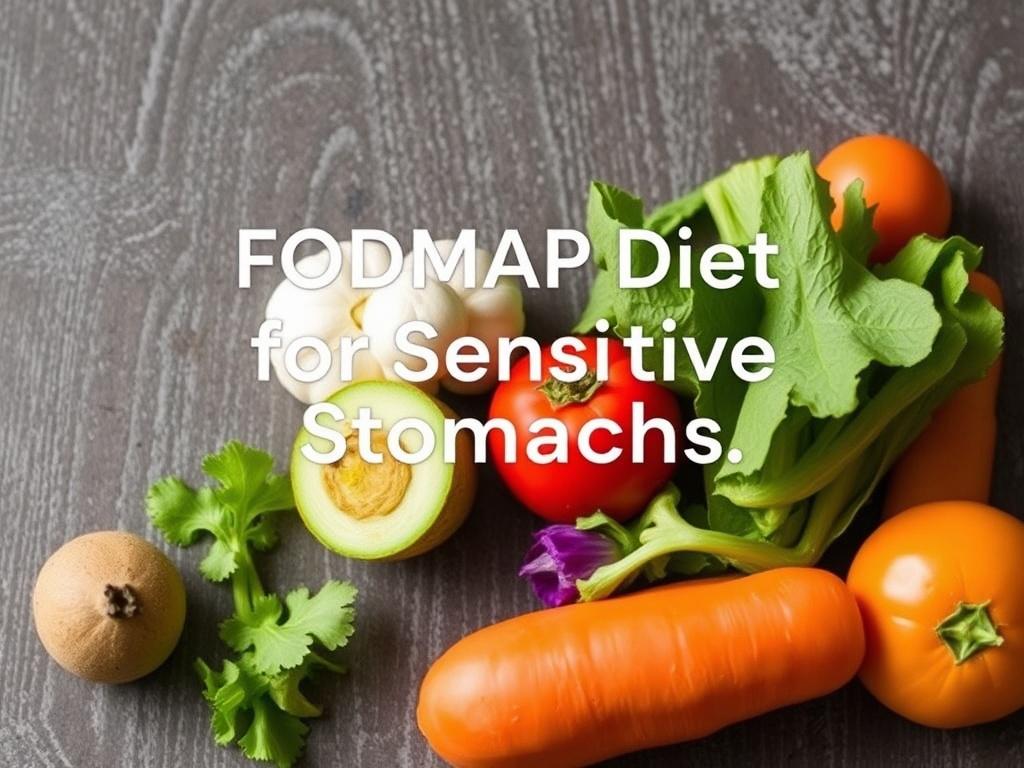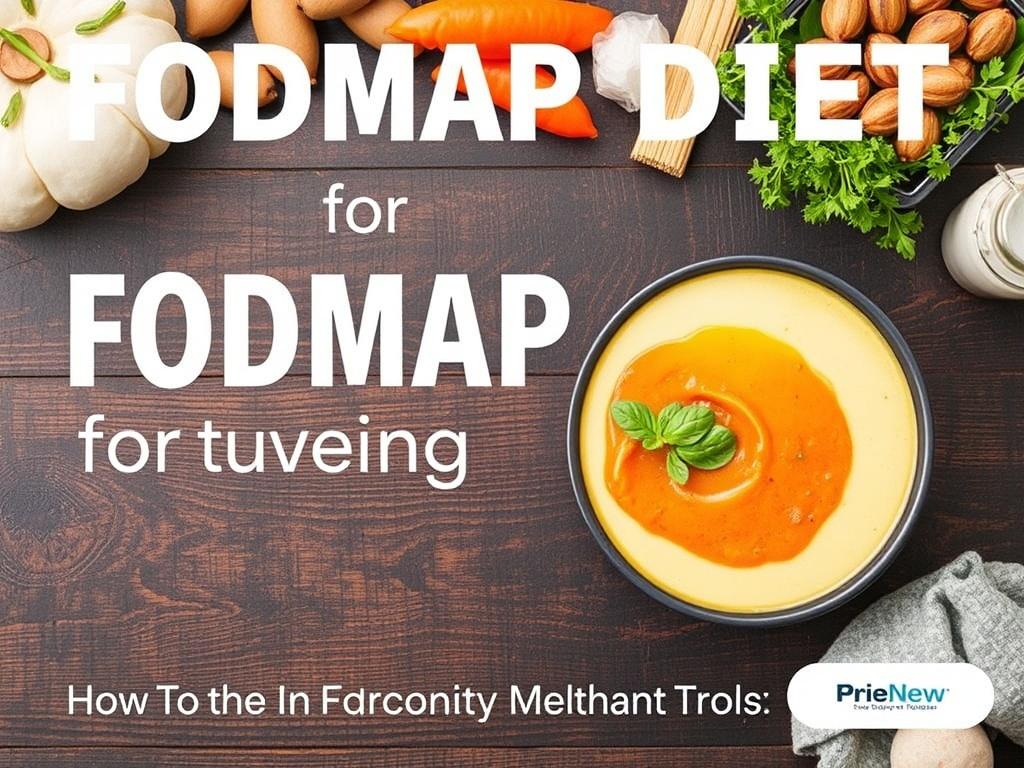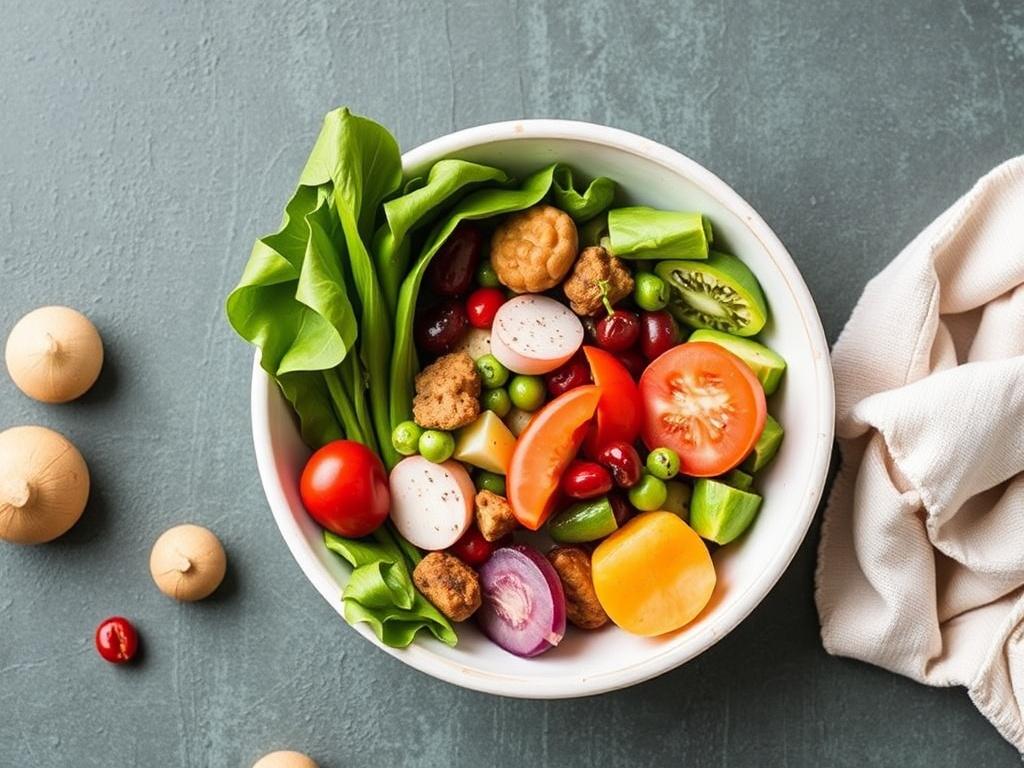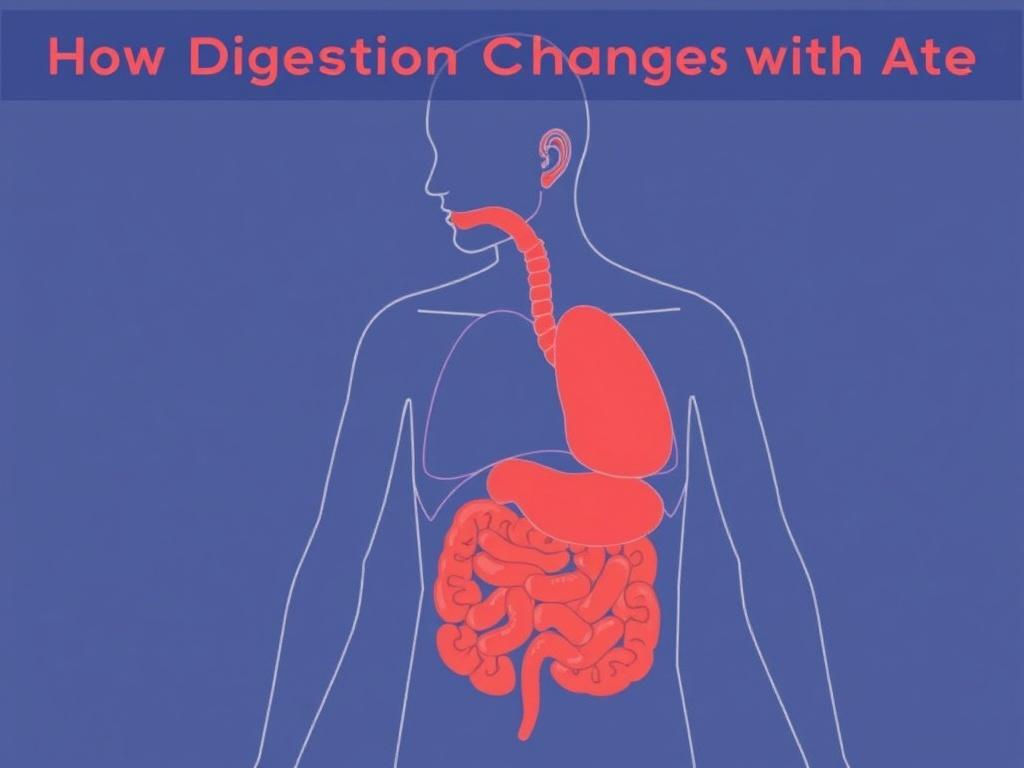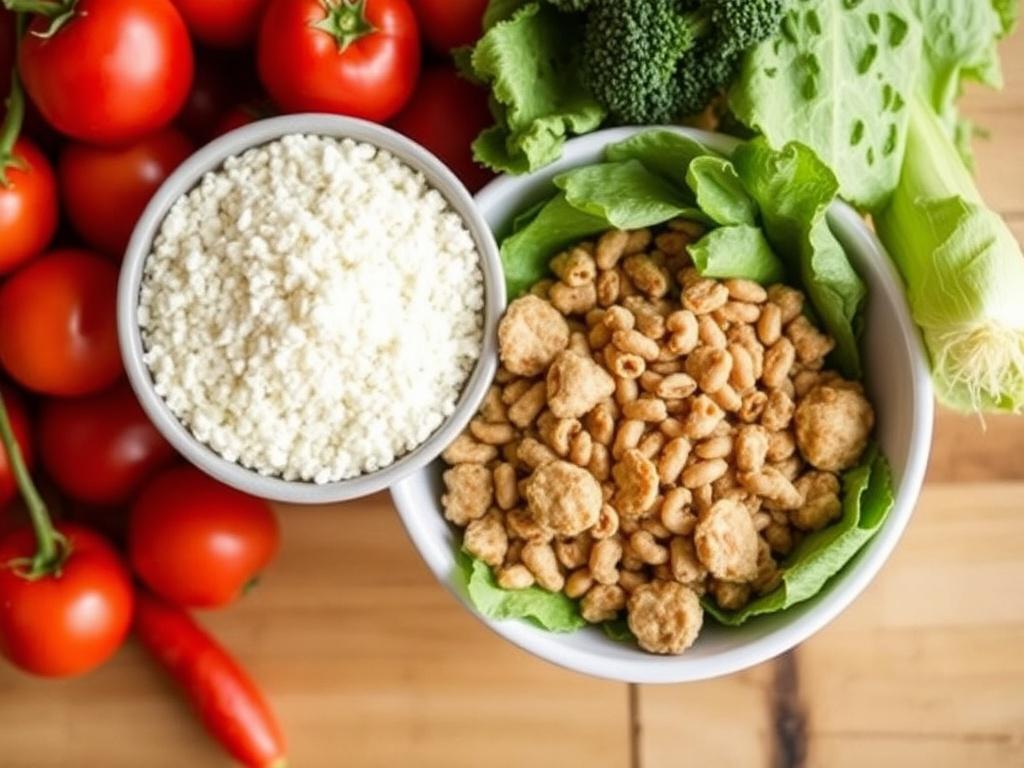If your stomach seems to have a mind of its own, reacting to foods that once felt perfectly innocent, you’re not alone. Many people with sensitive stomachs—especially those with irritable bowel syndrome (IBS)—find relief by understanding and managing FODMAPs. This article walks you through what the FODMAP diet is, why it helps, how to start it, and how to keep living a full, delicious life while managing digestive symptoms. I’ll keep it conversational, practical, and encouraging so you can feel confident trying this approach and making it part of your routine if it suits you.
Let’s begin with the basics and then move step by step into meal plans, shopping tips, troubleshooting, and success stories. You’ll get lists, a handy table, recipes, and clear guidance on phases of the diet so it doesn’t feel like a mystery. By the end, you should have a strong roadmap for using the FODMAP diet for sensitive stomachs in a sustainable, enjoyable way.
What Are FODMAPs and Why Do They Matter?
FODMAP stands for fermentable oligosaccharides, disaccharides, monosaccharides and polyols. That mouthful describes a group of short-chain carbohydrates and sugar alcohols that are poorly absorbed in the small intestine for some people. When these carbs reach the large intestine, gut bacteria ferment them, producing gas and drawing in water—exactly the combination that can cause bloating, pain, gas, and changes in bowel habits.
For someone with a sensitive stomach or IBS, FODMAPs can be the trigger that turns a calm digestive day into an uncomfortable one. The FODMAP diet—often called the low FODMAP diet—was developed by researchers at Monash University and has been shown in many studies to reduce symptoms in a substantial proportion of people with IBS. It’s not a cure-all, but it’s a powerful tool that helps identify which carbohydrate triggers are problematic for you.
How FODMAPs Affect Sensitive Stomachs
Imagine your gut as a narrow road. For most people, traffic flows smoothly. For others, traffic is heavier and the road narrower. FODMAPs are like a sudden influx of cars (water and fermentable sugars) that create a traffic jam—pain, bloating, gas, and sometimes diarrhea or constipation. The severity depends on how much FODMAP you eat, your gut microbiome, and your gut sensitivity. Some people tolerate small amounts of certain FODMAPs; others react strongly. That’s why the FODMAP diet uses an orderly elimination and reintroduction process.
Who Benefits from a Low FODMAP Diet?
— People with irritable bowel syndrome (IBS) often see major improvements.
— Those with functional gut disorders, including some with bloating and pain, may benefit.
— Some people with small intestinal bacterial overgrowth (SIBO) might notice changes, but SIBO requires careful medical management.
— Not everyone with a sensitive stomach needs to try this diet. It’s best used when symptoms are moderate or persistent and other red flags have been ruled out by a healthcare provider (weight loss, blood in stool, anemia, or unexplained fever).
Phases of the Low FODMAP Diet
To use the low FODMAP diet correctly, think in three phases: elimination, reintroduction (also called challenge), and personalization. Each stage has a clear purpose and helps you discover which foods you can tolerate.
1. Elimination Phase
The elimination phase lasts about 2–6 weeks. During this time, you strictly avoid high FODMAP foods. The goal is to reduce your overall FODMAP load to see whether your symptoms improve. Many people notice symptom relief in days to a few weeks. If your symptoms don’t change after 6 weeks, discuss next steps with a dietitian or doctor; it may not be the right approach for you.
2. Reintroduction Phase
Once symptoms improve, you systematically reintroduce FODMAP groups one at a time to see which ones trigger issues. Each reintroduction should be done in a structured way: introduce a single FODMAP subgroup for a defined period (e.g., 3 days of increasing portion size) and then observe symptoms. This phase helps you identify safe amounts and specific triggers.
3. Personalization Phase
Ultimately, you want a long-term, varied diet that avoids only the FODMAPs that bother you. Most people end up with a relaxed, personalized low FODMAP diet rather than avoiding all FODMAPs forever. The aim is to maximize variety and nutritional adequacy while minimizing symptoms.
Low FODMAP vs. High FODMAP Foods: Practical Lists
Below is a practical table that lists common foods categorized broadly as low or high FODMAP. Portion sizes matter—some foods are low FODMAP in small portions but become high in larger amounts.
| Food Category | Low FODMAP Examples (Generally Safe in Typical Portions) | High FODMAP Examples (Likely to Trigger Symptoms) |
|---|---|---|
| Fruits | Banana (ripe), blueberries, strawberries, oranges, kiwi, cantaloupe | Apples, pears, cherries, mango, watermelon |
| Vegetables | Carrots, spinach, zucchini, bell peppers, eggplant, lettuce | Onions, garlic, cauliflower, asparagus, mushrooms |
| Grains & Starches | Rice, oats, quinoa, gluten-free bread (check ingredients), potatoes | Wheat-based breads (large serving), rye, barley (depending on portion) |
| Dairy & Alternatives | Lactose-free milk, hard cheeses (cheddar, parmesan), almond milk (unsweetened) | Regular milk, yogurt, soft cheeses, ice cream (lactose-containing) |
| Proteins | Fresh meats, poultry, fish, eggs, firm tofu | Processed meats with onion/garlic, legume-based spreads in large amounts |
| Sweeteners & Add-ins | Table sugar, maple syrup, small amounts of honey in some cases | Sorbitol, mannitol, xylitol, large amounts of honey and high-fructose corn syrup |
Important Notes About Portions
Portions are key. For example, a small amount of avocado or a half-cup of canned lentils (rinsed) may be tolerated but larger servings become high FODMAP. Always check portion guidance—Monash University and other reputable sources publish serving size details.
How to Start the FODMAP Diet: Step-by-Step
Starting the FODMAP diet can feel overwhelming, but broken down into clear steps it becomes manageable and empowering.
Step 1: Get Medical Clearance
Before making big dietary changes, consult your doctor if you have alarming symptoms like unexplained weight loss, blood in your stool, fever, or new severe abdominal pain. These need to be evaluated. If you have medical conditions (diabetes, celiac disease, kidney disease), consult a specialist.
Step 2: Work with a Registered Dietitian
A dietitian trained in the low FODMAP diet can greatly improve your success. They’ll help you avoid unnecessary restrictions, ensure balanced nutrition, guide reintroduction, and provide personalized tips. If a dietitian isn’t accessible, trusted online resources (Monash, FODMAP Friendly) and support groups can help, but professional guidance is optimal.
Step 3: Plan the Elimination Phase
Decide on a realistic period (typically 2–6 weeks). Use the food table above and reliable apps to plan meals. Clean out tempting high FODMAP items, or set them in a cupboard labeled «reintroduce later» so you don’t feel deprived.
Step 4: Shop Smart and Prep
Create a shopping list and choose simple recipes for the first weeks. Meal prep reduces the chance of accidental high FODMAP meals when you’re busy or stressed.
Step 5: Keep a Symptom and Food Diary
Track what you eat, portion sizes, and symptoms. This record is gold when it’s time to reintroduce and troubleshoot. Note days when symptoms improve—this is a sign your elimination is working.
Step 6: Reintroduce One Group at a Time
Follow a guided plan to reintroduce FODMAP subgroups (e.g., lactose, fructose, fructans, galacto-oligosaccharides, polyols). Test one food type for several days while keeping other FODMAPs low. If symptoms return, stop and give your gut time to settle before trying another test.
Practical Meal Ideas and Recipes
You don’t have to live on plain chicken and rice. The low FODMAP diet can be flavorful, varied, and satisfying.
Simple Breakfasts
- Overnight oats made with gluten-free oats and lactose-free milk, topped with blueberries and chopped almonds.
- Scrambled eggs with baby spinach, sliced tomato, and a side of gluten-free toast.
- Greek-style lactose-free yogurt with strawberries and a drizzle of maple syrup.
Lunches That Travel Well
- Quinoa salad with roasted zucchini, bell pepper, parsley, feta (lactose-free if needed), and lemon-olive oil dressing.
- Grilled chicken wrap using a gluten-free tortilla, lettuce, carrot, and a safe mayo-based dressing.
- Rice noodle bowl with cooked shrimp, cucumber, carrot ribbons, and a lime-ginger dressing.
Dinners That Feel Special
- Baked salmon with rosemary, served with mashed potatoes and steamed green beans.
- Stir-fry using firm tofu, bok choy, carrots, and a garlic-infused oil (safe—infused oil provides flavor without FODMAPs).
- Roasted chicken thighs with rosemary and lemon, quinoa pilaf, and sautéed spinach.
Snacks and Desserts
- Rice cakes topped with peanut butter and banana slices.
- Dark chocolate (small portions) with strawberries.
- Homemade chia pudding made with almond milk and a hint of vanilla.
Quick Tip: Use Garlic- and Onion-Infused Oils
Since the flavor compounds are fat-soluble and not water-soluble, you can get garlic and onion flavors from infused oils that don’t contain the actual FODMAP compounds. Use them liberally to enhance dishes safely during the elimination phase.
Sample 1-Week Low FODMAP Meal Plan
This simple plan offers variety while keeping FODMAPs low. Portions and individual tolerances vary, so adjust as needed.
| Day | Breakfast | Lunch | Dinner | Snack |
|---|---|---|---|---|
| Monday | Oats with blueberries, almond milk | Quinoa salad with carrots and cucumber | Grilled salmon, mashed potatoes, steamed green beans | Rice cake with peanut butter |
| Tuesday | Scrambled eggs and spinach | Rice noodle bowl with shrimp | Baked chicken, roasted zucchini, quinoa | Banana (small) and almonds |
| Wednesday | Greek-style lactose-free yogurt with strawberries | Chicken salad in gluten-free wrap | Tofu stir-fry with bok choy | Dark chocolate square |
| Thursday | Chia pudding with almond milk | Potato and green bean salad with tuna | Beef and bell pepper fajitas (gluten-free tortilla) | Carrot sticks and hummus (small portion) |
| Friday | Toast (gluten-free) with peanut butter and banana | Roasted vegetable quinoa bowl | Risotto made with Arborio rice and Parmesan | Blueberries and lactose-free yogurt |
| Saturday | Omelet with tomato and chives | Leftover chicken and rice | Grilled fish tacos (corn tortillas) with cabbage slaw | Maple syrup granola bar (low FODMAP) |
| Sunday | Pancakes (gluten-free) with strawberries | Salmon salad with greens | Roast beef, roasted potatoes, sautéed carrots | Orange or mandarin |
Shopping and Pantry Essentials for a Low FODMAP Kitchen
Stocking a kitchen for the FODMAP diet will make cooking and snacking easier. Here are essentials to keep on hand.
- Gluten-free grains: rice, quinoa, oats labeled gluten-free
- Lactose-free dairy or plant milks: lactose-free milk, almond milk, lactose-free yogurt
- Fresh produce: carrots, spinach, bell peppers, zucchini, berries, oranges
- Proteins: fresh meats, fish, eggs, firm tofu
- Cooking fats and flavor: olive oil, avocado oil, garlic-infused oil, fresh herbs
- Canned goods: tomatoes (check for onion/garlic), coconut milk in small amounts
- Snacks: rice cakes, low FODMAP granola, dark chocolate
- Spreads and condiments: peanut butter (no high FODMAP additives), mayonnaise, mustard
Common Pitfalls and How to Avoid Them
Trying the FODMAP diet without guidance can lead to mistakes. Here are common traps and how to avoid them.
Pitfall: Over-Restricting for Too Long
Some people avoid all FODMAPs forever, which risks nutritional deficiencies and is unnecessary for most. Remember, elimination is temporary. Reintroductions are essential to find your personal tolerance.
Pitfall: Ignoring Portions
You might avoid a food because it’s «high FODMAP» when, in small amounts, it’s fine. Use portion-based guidance to avoid unnecessary restriction.
Pitfall: Not Reading Ingredient Labels
Processed foods can hide high FODMAP ingredients like inulin, honey, high-fructose corn syrup, or sugar alcohols. Read labels carefully.
Pitfall: No Professional Help
Navigating reintroductions without support can be confusing. A dietitian helps interpret results, ensures balanced nutrition, and tailored guidance.
Troubleshooting: When the Diet Doesn’t Work
If symptoms don’t improve on a low FODMAP diet, consider these possibilities:
- The elimination wasn’t strict enough—hidden FODMAPs may be creeping in.
- Your symptoms have a different cause—ask your doctor about tests for celiac disease, inflammatory bowel disease, or other conditions.
- SIBO or other microbiome issues may be present—these need a medical approach.
- Other dietary triggers are involved: fat, caffeine, alcohol, medications, or stress.
If in doubt, return to your healthcare provider for further evaluation.
Supplements, Probiotics, and Other Therapies
People often ask whether probiotics, digestive enzymes, or fiber supplements help on a low FODMAP diet.
Probiotics
Some probiotics can help, but their effects vary by strain and person. Certain probiotics may improve bloating and overall gut health, but they aren’t a magic bullet. Discuss options with your clinician.
Digestive Enzymes
There are enzyme supplements designed to break down lactose or certain FODMAPs. Lactase can help with lactose-containing foods; alpha-galactosidase may help with some oligosaccharides. Effectiveness varies—try under guidance.
Fiber
Fiber is important for gut health. Some low FODMAP fibers like psyllium may help with bowel regularity. Avoid suddenly increasing fiber—do it gradually to prevent more gas.
Special Considerations: Children, Pregnancy, and Older Adults
The low FODMAP diet can be used in special populations, but extra care is required.
Children
Children’s diets must be managed carefully to ensure growth and nutrition. Work with a pediatric dietitian before starting the low FODMAP diet.
Pregnancy
During pregnancy, avoid unnecessary dietary restriction. Talk to your obstetrician/dietitian before attempting elimination diets.
Older Adults
Older adults may have different nutritional needs and higher risks if diets are too restrictive. Professional guidance is recommended.
Real People, Real Results: What to Expect
Many people with IBS report 50–75% symptom improvement on a well-implemented low FODMAP diet. Results are usually noticeable within days to a few weeks in the elimination phase. Reintroductions help fine-tune which foods to avoid and which you can enjoy in moderation.
Expect some trial and error. Celebrate the foods you can reintroduce successfully. Most people find a balance—an individualized, relaxed low FODMAP diet that reduces symptoms without feeling like punishment.
Resources and Tools
Use evidence-based tools to support your journey:
- Monash University FODMAP resources and app—research-backed with portion guidance.
- FODMAP Friendly app and certification program for packaged foods.
- Registered dietitian specializing in GI disorders—search professional directories.
- Support groups and online communities—good for recipes and emotional support but cross-check medical claims.
Final Practical Tips for Everyday Life
- Plan meals ahead so you’re not tempted by high FODMAP convenience foods when hungry.
- Eat mindfully and note how you feel after meals—stress and eating quickly can worsen symptoms.
- Carry safe snacks (rice cakes, nuts in small portions) when you travel or go to social events.
- Advocate for yourself in restaurants—ask about ingredients and request substitutions like plain grilled protein and safe sides.
- Be patient. Finding your triggers takes time, but the payoff is fewer unpredictable flare-ups.
When to Seek Medical Help
If you experience any of the following, see a doctor promptly:
- Blood in stool, unexplained weight loss, persistent fever
- Severe pain not relieved by diet changes
- New symptoms that are different from your usual pattern
- If you’re not improving after a well-conducted elimination phase
These signs suggest something more than diet-related functional gut issues and need medical assessment.
Next Steps: How to Take Action This Week
If you’re ready to try the FODMAP diet for your sensitive stomach, here’s a simple 7-day action plan to get started:
- Day 1: Schedule a call with your healthcare provider or dietitian. Gather resources (Monash app).
- Day 2: Clean out easily-tempting high FODMAP junk food or set it aside for reintroduction later.
- Day 3: Make a shopping list using the pantry essentials above and shop for the week.
- Day 4: Prepare a few simple meals and snacks to avoid decision fatigue.
- Day 5–7: Start the elimination phase; track your food and symptoms every day.
- End of week 1: Evaluate how you feel; if symptoms improved, plan your reintroduction phase with your dietitian.
Summary: Balancing Comfort and Nutrition
A sensitive stomach can be frustrating and isolating, but the low FODMAP approach offers a structured way to regain control. It lets you identify specific carbohydrate triggers rather than guessing blindly and helps you craft a long-term diet that supports both comfort and nutrition. With careful planning, a bit of patience, and the right support, many people reclaim meals they love without the fear of a flare-up.
Conclusion
The FODMAP diet for sensitive stomachs is a practical, evidence-based strategy that can reduce bloating, pain, and unpredictable bowel habits by identifying which fermentable carbs trigger your symptoms. Start with an informed elimination phase, reintroduce systematically to pinpoint troublemakers, and then personalize a varied diet that fits your lifestyle. Work with healthcare professionals when possible, pay attention to portion sizes, and use tools like symptom diaries and reliable apps to guide you. With patience and planning, you can find a balance that supports both gut comfort and a fulfilling, enjoyable relationship with food.
Читайте далее:
